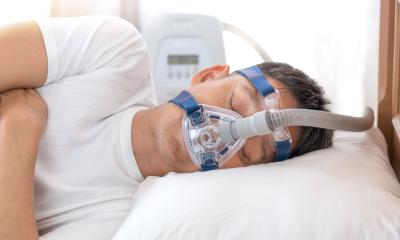Maquet Critical Care is launching the NAVA
System enables ventilator to be controlled by the patient's brain.
Combining this with the firm’s SERVO-i ventilator is a new approach to mechanical ventilation, Maquet reports: ‘It allows the patient to control the ventilator with his or her respiratory centre. NAVA (Neurally Adjusted Ventilatory Assist). represents a paradigm shift in the area of ventilation therapy.’
Signals from the brain’s respiratory control centre are transmitted through the phrenic nerve to the diaphragm, where a catheter captures the electrical activity (Edi) and feeds it to the ventilator. The ventilator responds by providing the requested level of support to the patient. As the ventilator and diaphragm work with the same signal, the coupling between the two is virtually instantaneous, Maquet explains. ‘NAVA is a completely new mode of mechanical ventilation where the ventilator is controlled by the patient’s respiratory centre on a breath-by-breath basis,’ said Christer Sinderby, Assistant Professor, St. Michael’s Hospital, Toronto, Canada. ‘In addition to being a distinct mode of ventilation, NAVA also enables a complete evaluation of the neural respiratory control by capturing the electrical activity of the diaphragm. In other words, it offers a unique monitoring capability for the medical staff.’
Conventional mechanical ventilators sense patient effort by either a drop in airway pressure or a reversal in flow, the last and slowest reacting step in the chain of respiratory events. NAVA, on the other hand, senses the electrical activity of the diaphragm – the earliest respiratory signal that can be detected.
NAVA benefits:
• Improved synchrony between the patient and the ventilator
• Lung protection through avoidance of over or under assistance of the patient
• Improved synchrony helps minimize patient discomfort and agitation while it promotes spontaneous breathing
• The Edi signal can be used as decision support for medical staff concerning unloading or extubation
• The Edi signal can be used as a unique monitoring tool providing data on respiratory drive, volume requirements, effect of ventilatory settings and to gain indication for sedation and weaning
The NAVA function is available on Maquet’s SERVO-i ventilator; the only additional need is the NAVA software, an Edi Module and an Edi catheter. A NAVA upgrade for an existing SERVO-i ventilator is possible.
Maquet is in Hall 12. Stand D 51/52
14.11.2006





